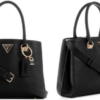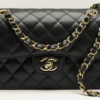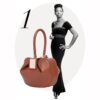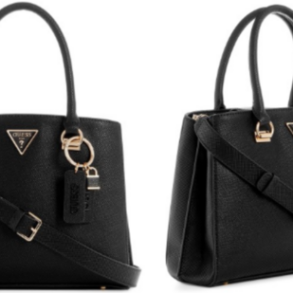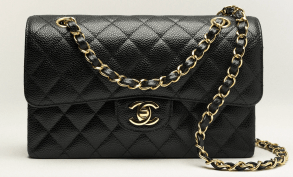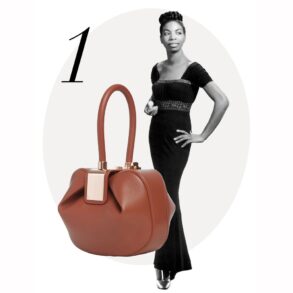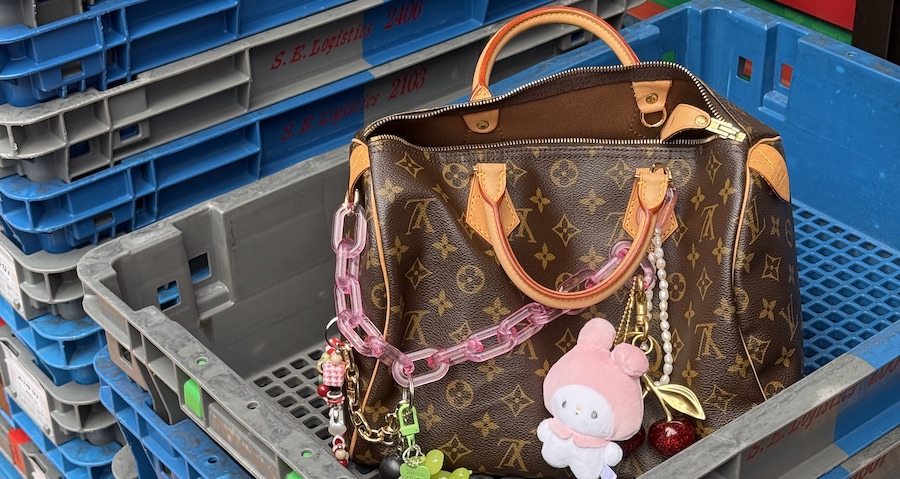
The devil works hard but counterfeiters work harder.
A mint condition, pre-loved designer bag is a gift that keeps on giving. Better for the planet and your pocket, the thrill of a successful hunt is like a freshly baked chocolate chip cookie or rewatching The Nanny – a giddy serotonin boost.
As retail prices of luxury designer goods continue to soar, it makes sense that the demand for secondhand is also off the charts. According to an eBay report in 2023, Louis Vuitton is searched on-site every two minutes, Gucci every three minutes, and Oroton and Prada every four minutes.
For more fashion news, shoots, articles and features, head to our Fashion section.
“We see what is popular in the fashion world reflected in the inventory onsite – from revived ’90s classics like the Fendi Baguette, Prada Nylon bag and Dior Saddle bag to unique vintage pieces,” says eBay Australia Fashion Lead, Anne-Marie Chene.
Unfortunately, the growing inventory of genuine pre-loved designer bags (and the lucrative demand for them) means fakes are also on the rise. “With counterfeiters becoming more sophisticated, identifying a fake handbag is increasingly more complex,” says Anne-Marie. “Subtle inconsistencies in stitching, logos, hardware and materials can be difficult for the untrained eye to detect.” In other words, the devil works hard but counterfeiters work harder.
This doesn’t mean we should be scared of climbing aboard the circular fashion train. Getting your hands on the goods just involves channelling your inner Nancy Drew to know if a designer bag is a fake. To help you on the case, I asked some experts in pre-loved fashion to share exactly how to spot a fake when you’re shopping for handbags.
Red flags to watch out for
Experts agree the most obvious sign of a counterfeit bag is simply a shabby job. “Poor quality materials and hardware, uneven stitching and visible adhesive residue are all red flags,” says Ellie Graham, operations manager at Swop. A luxury bag should live up to a luxury standard, after all.
A quick look at the details will also reveal any tell-tale signs the bag is not the real deal. “Counterfeit bags are often easy to identify. The leather tends to peel because it isn’t genuine and the tags may have inaccurate details or spelling errors,” says Iman Elmawey, who runs the ’90s archival vintage store, Crash Girl. “Hardware on fake bags often rusts, which doesn’t generally happen with high-quality metals used in authentic pieces.”
Another tip, don’t be afraid to trust your gut! “It can often be super obvious to even the untrained eye when the leather feels cheap or the hardware is super lightweight,” says Georgia Gordon, a Naarm-based vintage designer reseller at Guzzi Archive.
Assess the materials and craftsmanship
In terms of green flags, top-notch leather and heavy, solid hardware are signs you’re onto a winner: “Genuine bags stand out through their high-quality materials and craftsmanship,” says Iman.
“Real leather should feel soft, supple, and have a natural texture, unlike the stiff or plastic feel of fake leather,” she says. “The hardware should be well-crafted, with clean engravings and a polished finish. Even if it’s a secondhand vintage item, these designer pieces are meant to last and hold those details.”
When it comes to older bags, look for a human touch. “Some say to look for perfect stitching but this is actually not true,” says Georgia. “High-quality brands, especially vintage ones, are often handstitched, meaning the stitching can be a little inconsistent here and there.”
Check for discrepancies
Maintaining a luxury standard often means playing by the rules, so make sure the bag is consistent. “Sometimes counterfeit factories completely make up a model or colourway that never existed,” says Georgia. “While you can’t always find out this way, it’s worth Google image searching it to see if there are others like it.”
However, on the flip side, the rarer your bag is, the more likely it is to be legit. “Counterfeit factories don’t tend to replicate niche or less popular bags, so if it’s a less popular model you can safely assume it’s real,” she says.
Read the fine print
From serial codes to hardware, each designer label has its own set of brand-specific features, so make sure the bag follows the brief. “Authentic Balenciaga bags will have the Lampo logo on the back of all zipper heads,” says Ellie. “Miu Miu bags always have a three-digit factory code on a small tag stitched into the lining and Bottega Veneta exclusively uses Riri brand zippers.”
“Counterfeit Prada is easy to spot by checking the logo. Often the ‘R’ in fake Prada pieces will be inconsistent with the authentic logo which has a small gap above the right leg of the ‘R’.”
Ellie also recommends checking the logo is consistent with the designer’s era. Take Louis Vuitton for example; the interior of the bag will often have a stamp outlining whether the bag was made in France, Italy or USA. Bags produced before 2021 will also have a date code embossed in the fabric or stitched to an inner seam to identify when and where the bag was made (A1 means it was made in France and CE means it was made in Italy). In genuine bags, these two details should always match.
Ask for close-ups
If a reseller has done their due diligence and is confident their product is genuine, they’ve nothing to hide. So, always ask for plenty of snaps before you snap it up. “We recommend asking for close-up photos of the zippers, lining, hardware and serial code. You can then use a reverse Google image search to compare with authentic versions online,” says Ellie.
But remember, it’s good business to keep a few cards close to the chest, so don’t be too suspicious if a professional reseller doesn’t want to tell you exactly where they got the bag from. “We don’t share our sources that easily for good reason,” says Georgia. “Something to note is a lot of resellers source from Japan as they have much stricter laws on counterfeit goods, hence why it’s so popular for [pre-loved] vintage designer fashion.”
Leave it to the pros
A designer bag often comes with a designer price tag even when it’s secondhand, so it’s totally understandable to hesitate before you buy. For extra peace of mind, you can always enlist the help of third-party authentication services. Alternatively, shop with the people who know their bags best!
“Our authenticators are experts with a passion for luxury,” says eBay’s Anne-Marie. “They meticulously examine each item using a multi-point inspection system, and their rigorous, ongoing local and international training keeps them ahead of evolving trends and the latest counterfeiting techniques. Our authenticators possess extensive knowledge spanning decades of designer handbags to ensure they are genuine.”
For more advice on shopping pre-loved designer bags, read this.
This post was originally published on this site be sure to check out more of their content.

